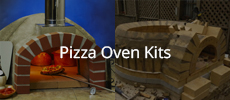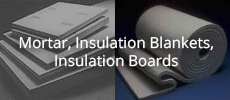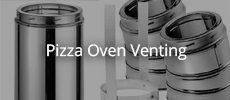Maybe a bit late to the party but here is an 81" build. Flat dome.
David.
Announcement
Collapse
No announcement yet.
Verifying oven dimensions for a commercial build?
Collapse
X
-
That’s a big boy, I thought my 50” was huge. I agree that not all the rules of thumb for smaller ovens hold true for big builds.
I like the idea of a hemisphere also, but once I was mocking it up, the 25” height didn’t make a lot of sense. I was where you are at, and thought a super high opening would be a waste. After looking at spec drawings for commercially built ovens, I got comfortable with dropping my done height and settled on 20”.
This allowed me to keep a reasonable ratio, even though I don’t think it’s strictly required. While I don’t think it’s strictly required, I hesitated deviating too far from standard, because this thing represents a ton of work, and I only want to do it once.
I figure that anyone that manufactures these things regularly will be tweaking their opening sizes if some build doesn’t work out.
Leave a comment:
-
The design largely depends on what you intend cooking in your oven. The hemisphere is a great all rounder as it is the most structurally stable form which is more important if you are building in brick rather than cast. It is also the most efficient chamber form as far as combustion circulation. Where it has shortcomings is, as you've pointed out, the distance of the hot dome roof from the foods to be cooked. To cook pizza the Neapolitan ovens from Napoli were developed with a large radius dome to lower the crown of the oven. However, although this can cook pizzas faster it has shortcomings if used to cook other foods like high sided roasting pans because of the low sides at the perimeter. Modern cast ovens are generally a compromise of the two designs having higher sides at the perimeter as well as a lower height. This is possible for cast ovens without compromising the integrity of the structure too much, but for a brick build, not only is it far more difficult to construct, but introduces structural weakness because of the brick unit construction relying on mortar joints for strength.
Regarding the opening and fuel/air mixture, the ideal would be a much smaller air intake or oven mouth. Kilns have a way smaller air intake to achieve the ideal air/fuel mixture, but are fired with a much more controlled and gentle firing schedule than oven operators use. Unfortunately, having an ideal air intake for an oven would result in an oven mouth so small that working the oven during cooking would be almost impossible because of poor access. Some folk have found that they can decrease the air intake with their oven door placed partially closed to reduce the air intake to achieve the ideal air/fuel mixture and some going as far as creating a special door with a small air intake at the base (see blast doors). Personally I would caution against this because although the temperature will rise very rapidly under these conditions it is far too rapid a rise for the refractory material to cope with as sudden temperature rise also means uneven thermal expansion. Far better to give the structure time to expand evenly. A general rule for potters firing their kilns without damaging their wares from thermal shock is 100C/hr rise, yet we fire our ovens at more like 300C/hr. Granted potters wares are more delicate than brick or refractory, but the same principle applies. Taking it slow with the oven mouth fully open is far safer and produces greater longevity for your oven.
Further consideration should be given to the rate of heat travel through brick or refractory. As they are not particularly conductive, as a general rule heat will take “around an hour to travel an inch”. This is actually quite useful as it also works the other way around when cooling. This means the material will store the heat releasing it relatively slowly, far more suitable than a more conductive material like steel.
The drawings explain all of this.
Taking a brief look at your drawings shows a flue with a horizontal section. This tends to reduce flow, particularly at start up which could result in smoking out your restaurant. Generally nothing flatter than 45 degrees is preferred.
Last edited by david s; 05-09-2022, 01:18 PM.
- Likes 1
Leave a comment:
-
I can also put you in touch w/a very experienced commercial oven builder, if you PM me, I'll give you his contact info.
Leave a comment:
-
Dear all,
I apologize for the late reply as we are busy with these constructions.
I've read all your extremely helpful suggestions and info and would like to thank you all for these insightful contributions.
As for the issue at hand I'll try to explain it as simple as possible.
First, the internal dome height:-
A 2 meter internal diameter creates a 1 meter height internally to create a perfect dome.
The question here is, is it wise to create such height or will it cause heat loss in the top of the dome where heat is trapped in the top of the dome and is not used efficiently.
This concern suggests to flatten the dome a bit to make it around 80 cm in height or 0.8 meters to avoid heat loss.
Secondly, the oven opening:-
The "63% rule" as stated is based on a survey. So my concern is.
Logically speaking, a 1 m height dome suggests by the rule to make the opening 63 cm high and inturn 120 cm wide which is half the diameter and is logically huge for an opening that may cause extreme heat loss and cold air intake.
My hypothesis is that this ratio since it's based on a survey with mostly small ovens, so wood fired oven requires a "minimum" air flow intake which is a threshold where under it it won't have enough cold air to satisfy the minimum oxygen level to ignite amd maintain operation.
This suggests that the survey raised the percentage as most of the ovens are small home use that never crosses the minimum requirement.
But propagating the same rule up seems too much and will probably cause too much cool air intake.
This ratio needs to be adjusted as a minimum of 30 cm high and 60 cm wide with a oven diameter of maximum 180 cm.
Yet moving over this diameter the ratio increases with 1:2 for each cm meaning that for a 190 cm the opening height should be around 35 cm high and 70cm wide and for a 200cm diameter the opening should not exceed 40 cm high and 80 cm wide else we'll face heat loss.
This is a logical assumption and not by any means tested.
As for the insulation it depends on the location and surrounding air flow if the oven is outdoors a higher insulation is required to insure that the oven keeps the heat trapped inside and not lose heat through the opening and the oven walls.
A 10cm insulation fiber is adequate yet 5cm is enough if topped with insulating concrete.
Leave a comment:
-
I would look at Windage 81" build and talk and PM him. His build is a commercial build for a restaurant and has been in service for several years.
- Likes 1
Leave a comment:
-
Like I said above, I dont know what the best dimensions for the opening would be but, I am sure that different size opening will make a difference.
The main issues will come from initial firing rather than feeding a hot oven.
As we rely on air entering the oven, circulating inside and exiting out the chimney, the amount of air is important.
Too big an entry could allow too much air and in turn cause thermal runaway … when the flame can exit the dome before doing their job,
Too small and you get overflueing…. not enough air causing smoke and a very poor burn?
In a household wood stove this can be seen quite clearly and be adjusted as required, with a pizza oven we tend to just take a bit of smoke or excess flame as normal but in fact neither is ideal.
So perhaps the opening is better matched to the size of the fire and the type and dryness of the fuel rather than the oven size?
However you do get to know your oven after a while and you can soon learn to match the size of fire to the air supply and largely avoid any issues…..
- Likes 1
Leave a comment:
-
This advice from James on oven opening size in the attached link is pertinent.
The whole 63% thing derived from a Canadian survey of oven sizes and simply concluded this figure by taking an average of all ovens in the survey. As such it does not follow that this is a rule that should be applied for either much larger or much smaller ovens. I believe folk place far too much emphasis on this rule. From my own experience of increasing both the internal oven heightt and the opening by the same amount to make my oven design larger, resulted in changing the opening height to 70% of the internal height. I was worried about how that would effect performance, but on operating the oven there was no perceptible difference in firing or heat retention. That oven continues to go great guns after 10 years. My advice would be to build the entry to the size that is convenient. Duplicating the size of your current oven would be a good starting point.
https://community.fornobravo.com/for...g-size#post764Last edited by david s; 05-07-2022, 01:53 PM.
- Likes 1
Leave a comment:
-
That is a huge oven!
The 63% rule is tried and tested to work on smaller ovens, I dont actually know to what extent that figure is scalable but I would think it is totally scalable?
The entry must allow cool air in and hot air out in the correct ratio to get the best performance, with most home ovens, any small deviation might not make much difference however on a commercial size oven I would want to get it right!
So basically I dont know!
Personally I would be using a lot more than 50mm of insulation, on such a large investment, I would suggest that 100mm would be a minimum.
- Likes 1
Leave a comment:
-
Wow-That's a big oven! I can't tell you how wide your opening should be, but if you want to shoot for the 63% height while keeping the opening smaller you can build your hemispherical arch on top of some flat/non-tapered bricks as a base. For example my opening height is 12.25" but the width is only 19.5" as the arch sits on top of a standard brick on both sides. If I went with a full half circle the opening would have been 24.5". Using the flat bricks as a base reduced opening by 5". This retains the look and (I believe) the stability of the hemispherical arch while allowing for a reduced width opening. Once you figure out the width you want you can increase the base height to give both the target height and width. You may have already been thinking of doing this but thought I'd point out the option.1 Photo
- Likes 1
Leave a comment:
-
Verifying oven dimensions for a commercial build?
Good day,
I was hoping to verify my oven build dimensions as I'm having doubts about my build and performance.
Attached are the drawings of the oven in metric dimensions, I'm building a 78" internal diameter oven that's 2 meters in internal diameter with a 1 meter height internally, creating a perfect dome.
Insulated with a 5cm thick fiber ceramic insulator held in place with metal sheath and covered with a thin layer of insulating mortar cement.
The main inquiry is of the oven opening, the height ratio as per my search is 63% of the internal height yet that would make the opening a 60cm in height and thus 120 cm wide which seems too much with extreme heat loss factor.
What would be a solid recommendation and correction of these dimensions to insure ease of use to the oven and maximise performance.
I'm currently producing around 700 pizzas per day and could receive orders up to 15 to 30 pizzas at a time thus the 2m oven instead of our standard of 1.5m to 1.8m diameter.
Should the opening remain 60cm wide 30cm high?Attached FilesTags: None






Leave a comment: